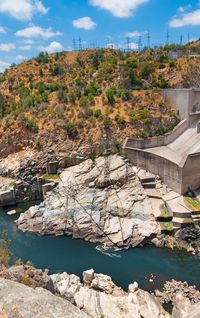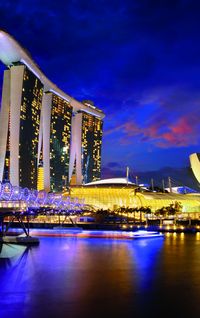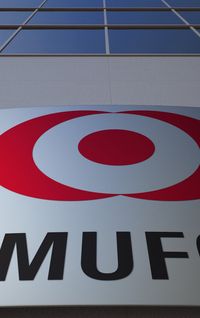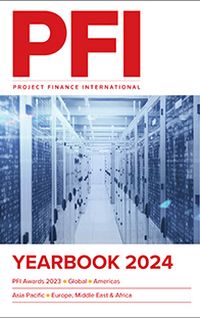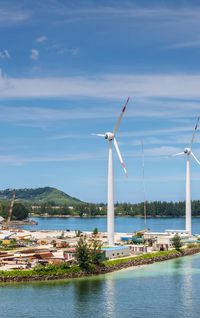The Dieppe le Treport, Iles d’Yeu, and Noirmoutier wind farms represent a major milestone in France’s development of the offshore wind sector. By Jerome Deflesselles, managing director, Yann Le Bot, director, and Bas Thijwissen, vice-president, natural resources and infrastructure, Societe Generale.
The tender process for the projects was launched in March 2013. The consortium, comprising GDF Suez, EDP Renewables and Neoen Marine at the time, submitted its initial offer in November 2013, and was informed by France’s Ministry in Charge of Energy in June 2014 that it was awarded both lots. This was the start of a development that implied a continuous dialogue with the authorities, local elected officials, fisheries and sea users, socio-economic players, contractors, the financing community, and the general public.
The Dieppe le Treport (Treport) project is located 15km off the coast of Le Treport and 17km off the coast of Dieppe. It comprises construction of 62 turbines with a total capacity of 500MW and a total investment of €2.7bn. It is being developed by a consortium including Ocean Winds, 60.5%, a 50/50 joint venture formed in 2019 between Engie and EDPR, Sumitomo, 29.5%, and Eolien en Mer Participation, a 100% CDC affiliate, 10%. The Treport project is expected to begin commercial operations in 2026. This offshore wind farm will supply nearly 850,000 people with electricity, the equivalent of two-thirds of the population of Seine-Maritime, or more than all the population of the Somme department.
The Noirmoutier project is located 11km off the island of Yeu and 16km off the island of Noirmoutier. Similar to the Treport project, it will have a total capacity of 500MW with a total investment requirement of €2.5bn. Its shareholding structure includes Ocean Winds, 60.25%, Sumitomo, 29.5%, Eolien en Mer Participation, 9.75%, and Vendée Energie, 0.5%. The Noirmoutier project is expected to start commercial operations in 2025. The construction phase, which will last 2.5 years, will create 1,600 direct jobs in France. The installation operations will start in 2024 and the wind farm is expected to be commissioned in the second half of 2025, with an estimated lifespan of 25 years.
Strategic assets
In 2015, the French state passed the Energy Transition Act, which required 40% of total electricity generation to be derived from renewable energy by 2030. The development of the offshore wind sector in France is key to achieving this. The French state targets to have 6.2GW of offshore wind projects in operations by 2028. With a capacity of circa 500MW each, the projects will be major contributors to reaching these targets.
Early involvement
Societe Generale has joined the sponsors as financial adviser on both projects from the very early bid phase in 2013, first advising in the structuring and preparation of the answer to the public tender until the award decision. It contributed to the development of the French regulatory framework applicable to offshore wind projects. It assisted the sponsors in their discussions with various public stakeholders in this area, as there was a need to translate the by-then rather generic energy laws and the 2013 tender rules into a fully fledge set of specific legal standards and agreements with relevant stakeholders. This process was spread over more than three years and its role in this regard was specially to ensure a bankable overall framework and to ensure consistency between the various negotiations taking place in parallel including:
* A concession agreement between each of the two project companies and the state has been developed to enable the proper utilisation of the projects' offshore site by the wind farms.
* A grid connection contract was negotiated with RTE acting as the French TSO. The outcome of this negotiation was crucial for ensuring the projects’ future bankability. Specific areas of scrutiny were the payment obligations (in case of unsuccessful project implementation) from the project companies to the TSO, which is fully responsible for the grid connection’s construction, financing and operation, as well as the TSO‘s liability in case of late achievement or unavailability of the grid connection.
* Similarly, important structuring efforts were required for ensuring the bankability of the power purchase agreement concluded with EDF Obligation d’Achat. This was particularly relevant when detailing the mechanics around the remuneration formula, since the 2013 tender rules provided for a monthly power tariff adjusted to the cumulated yearly production of each project’s tranche. Another key area related to the mechanics applying in case of force majeure and the protections offered to the projects in case of specific unforeseeable events.
Early advisory work related to the procurement activities, as the projects engaged early with a number of critical suppliers. This was especially relevant in a context of an evolving offshore wind supplier environment, which can be illustrated for example by the change of wind turbine type performed by the projects. Societe Generale assisted the projects in adapting the procurement strategy in the context of scarcity of supply/capacities: this required a flexible multi-contracting approach where the lotting strategy evolved over the projects’ development phase to best adjust to offered conditions and actual delivery capacities of the consulted tenderers.
During the projects’ development, the adviser designed and adjusted the financing structure and funding strategy as the offshore wind industry evolved, in the absence of existing precedents in France; as an example, the very specific adjusting tariff formula required the development of an ad hoc sculpting of the debt instalments to maximise the probability of success. There were regular lender market soundings, which helped adjust the structure to find the best balance between optimised equity returns and ensuring the bankability of the financings, while respecting the boundaries of the 2013 tender rules.
To that effect, the adviser engaged early with some key finance parties – French and international commercial lenders, institutional investors – to collect their views, while enlarging the group of involved lenders during the last couple of years to build up liquidity ahead of the actual debt-raising process. The specific engagement with JBIC as a cornerstone contributor to the lenders pool was of particular importance as well, with JBIC contributing more than €1bn of senior debt financing to each of the projects.
Proven financing structure
The financing structure of the two projects has typical project finance features for offshore wind transactions with a feed-in tariff-based revenue structure. It incorporates several senior facilities, including a long-term senior term loan facility, repaid over 17.5 years from the date of the first repayment. The structure also includes typical ancillary facilities: a letter of credit facility, a debt service reserve facility, a letter of credit facility, and a VAT facility. Moreover, the equity commitments of the sponsors are bridged through an equity bridge loan provided by a smaller group of banks.
Synergies
Given the similarities shared by both projects, they have been jointly developed from the outset. The joint development of these two significant projects was most efficient due to the synergies created. Negotiations for the two projects took place at the same time, including negotiations with the French state around the concession agreement, negotiations with EDF Obligation d’Achat of the power purchase agreements, discussions around other key project documents and negotiations with critical suppliers.
Not only did this combined approach enhance the efficiency of the development process itself, it also allowed a streamlined financing execution. The non-recourse financings of the two projects shared a common lender group, a common group of due diligence providers, and substantially the same finance documents. As a result, a substantial amount of debt was raised in support of the two projects’ combined investment requirements in excess of €5bn over the span of a few months from the final bank launch. Financial close for the Treport and Noirmoutier projects occurred within weeks from each other.
A diverse bank group
The commercial bank group for both financings consists of 16 banks, including six French banks, four Japanese banks, two British banks, two Spanish banks, one German bank and one Dutch bank. In addition, considering the Japanese angle through Sumitomo’s significant shareholding in the projects, JBIC acted as an anchor lender to both projects and provided a significant portion of the debt. JBIC’s involvement in these two projects is an illustration of its continued “support to assist Japanese companies in the overseas expansion of their infrastructure businesses toward decarbonisation by drawing on its various financial facilities and schemes for structuring projects and by performing its risk-assuming function”.
The projects benefited from strong French support, illustrated by the presence of six French banks, including BPI, the French public investment bank. In addition to the national support, the Treport and Noirmoutier projects enjoyed local support with the involvement of local banks.
![]()
To see the digital version of this report, please click here.
To purchase printed copies or a PDF of this report, please email leonie.welss@lseg.com
